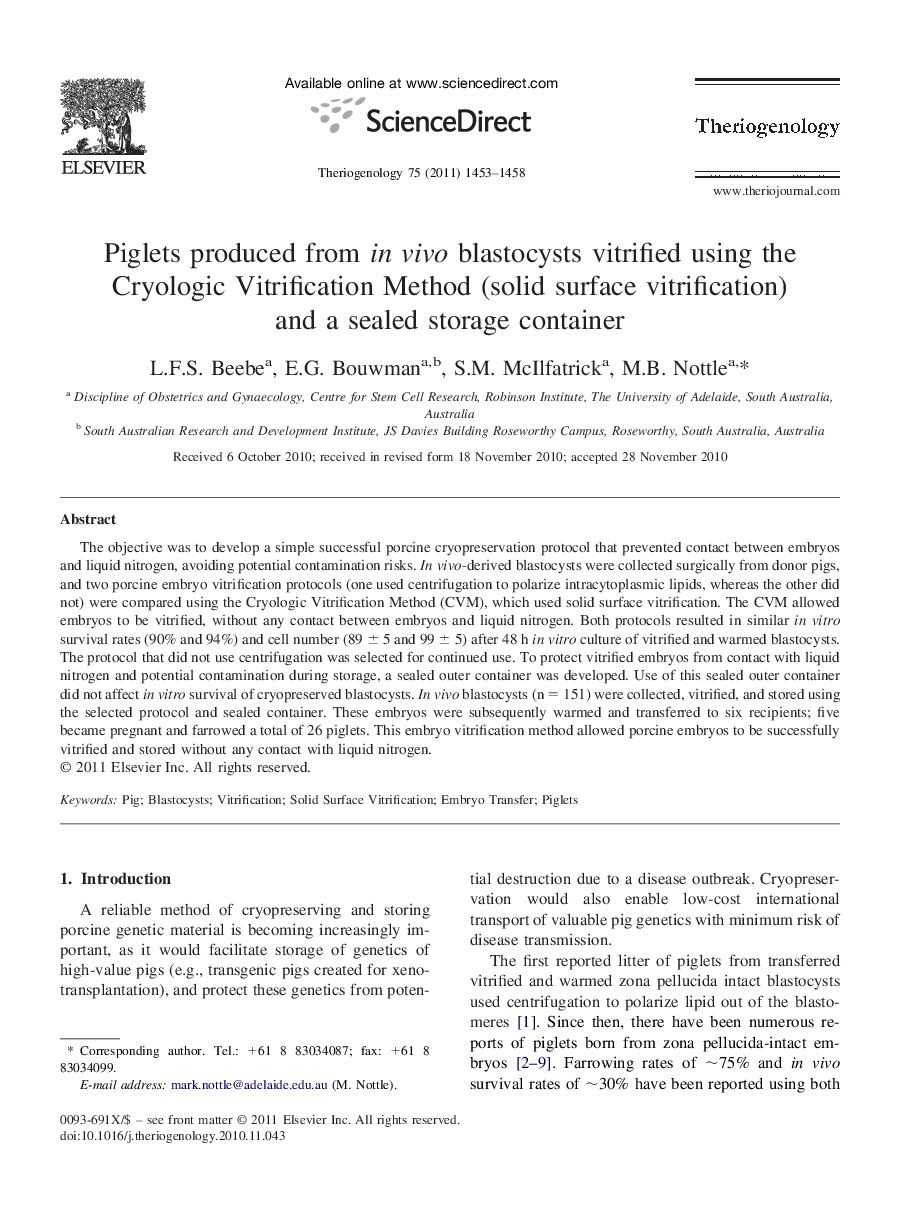| Article ID | Journal | Published Year | Pages | File Type |
|---|---|---|---|---|
| 2097760 | Theriogenology | 2011 | 6 Pages |
The objective was to develop a simple successful porcine cryopreservation protocol that prevented contact between embryos and liquid nitrogen, avoiding potential contamination risks. In vivo-derived blastocysts were collected surgically from donor pigs, and two porcine embryo vitrification protocols (one used centrifugation to polarize intracytoplasmic lipids, whereas the other did not) were compared using the Cryologic Vitrification Method (CVM), which used solid surface vitrification. The CVM allowed embryos to be vitrified, without any contact between embryos and liquid nitrogen. Both protocols resulted in similar in vitro survival rates (90% and 94%) and cell number (89 ± 5 and 99 ± 5) after 48 h in vitro culture of vitrified and warmed blastocysts. The protocol that did not use centrifugation was selected for continued use. To protect vitrified embryos from contact with liquid nitrogen and potential contamination during storage, a sealed outer container was developed. Use of this sealed outer container did not affect in vitro survival of cryopreserved blastocysts. In vivo blastocysts (n = 151) were collected, vitrified, and stored using the selected protocol and sealed container. These embryos were subsequently warmed and transferred to six recipients; five became pregnant and farrowed a total of 26 piglets. This embryo vitrification method allowed porcine embryos to be successfully vitrified and stored without any contact with liquid nitrogen.
